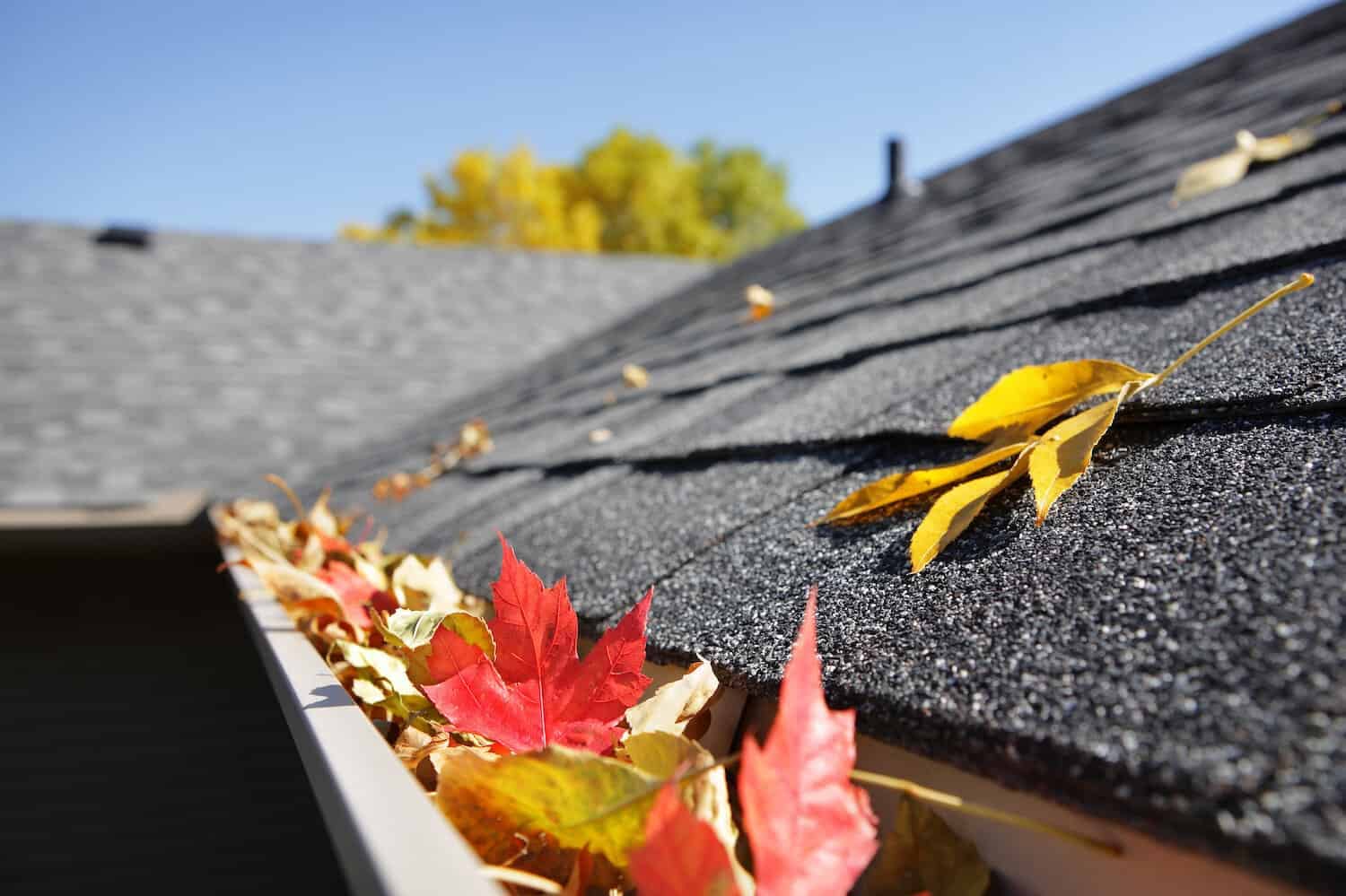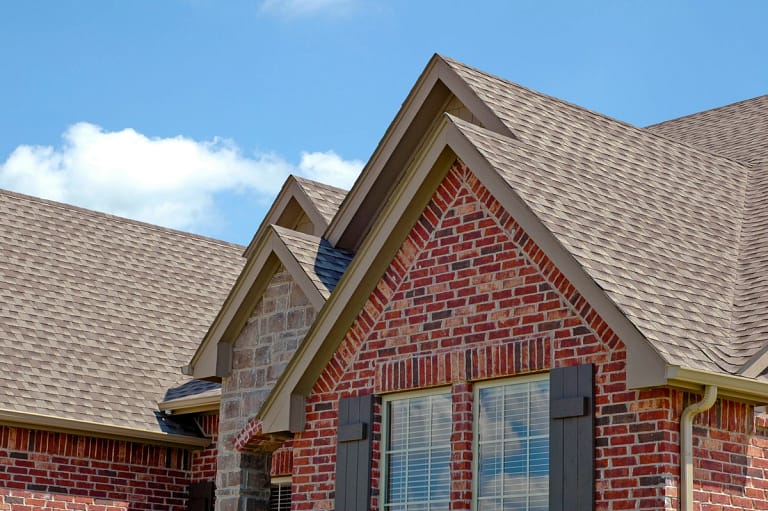The asphalt shingles on your roof have tens of thousands of tiny granules comprised of crushed stone on their surface, providing the roof color and texture. Roof shingles also have a protective layer that helps minimize damage due to sun exposure and lower heat penetration levels in your home.
Although asphalt shingles are a vital component of a fully functional roofing system, they are often susceptible to damage and other roofing issues such as shingle granule loss. You might start noticing mineral granules in your gutter system or along sidewalks, which could signify damaged shingles.
While losing granules over time is completely normal, excessive granule loss should cause concern. Keep reading to learn more about the most common reasons you’re seeing granular loss on your asphalt roof before consulting with a roofing contractor to make repairs.
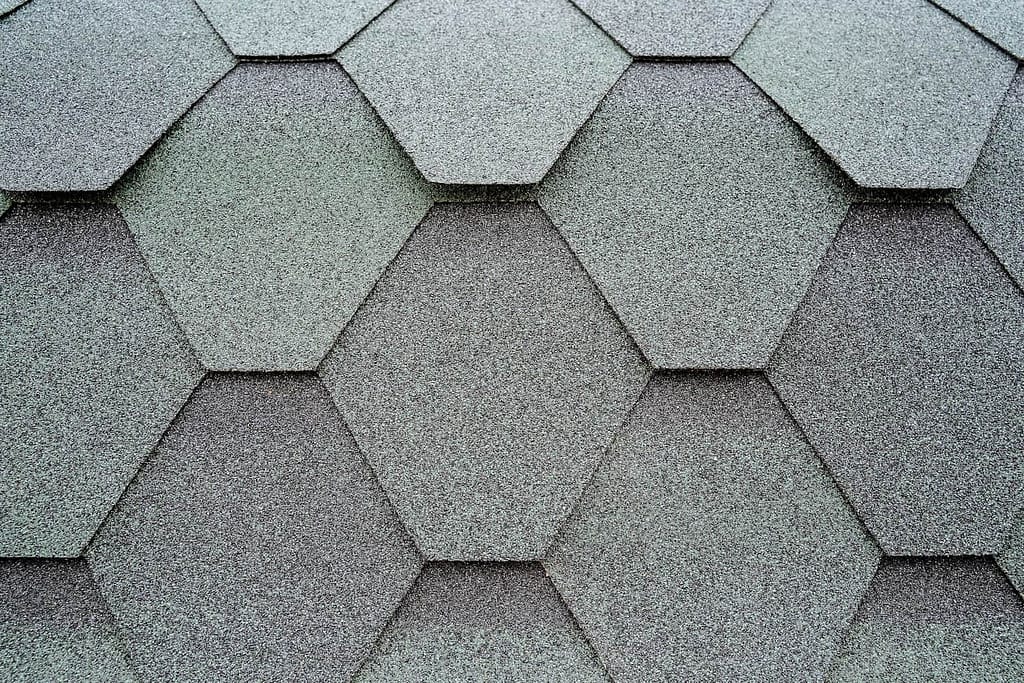
1.) New Asphalt Shingle Roof
One of the most typical times we see homeowners suffer granule loss is after installing a new asphalt roof or having a roof replacement. Losing granules immediately after installing or replacing an entire roof can seem concerning to first-timers, but it’s completely normal.
Don’t be alarmed by asphalt shingle granule loss after installing a new roof or replacing your roof. Even when installed correctly and with the best protective coating, a new asphalt roof can lose granules in the first few weeks or months following the job. This is because roofing contractors loosen granules as they work and walk around on the asphalt shingles.
Rainwater will wash these loose shingle granules off your new roof surface and into the gutter system, but this should stop shortly after having the roof installed. If the roof granule loss doesn’t wane after a few weeks, consult with your roofing company to ensure everything was correctly installed or get a roof inspection to determine whether there are any defects with your new asphalt shingles.
2.) Improper Installation or Repairs
When you put your trust in a roofing professional, you expect everything to go smoothly, whether you need a simple roof repair or are starting a whole roof replacement. Unfortunately, not every roofing contractor has the same level of expertise or experience, and sometimes you wind up with more roofing issues than when you started.
If your roofing professional cuts corners during the roof replacement, your roofing materials might be at risk of flaking and pre-mature damage from exposure. A good roofing contractor will complete the work correctly while utilizing methods that minimize impacts on the asphalt shingles and thus reduce granule loss.
Batching and Flaking Asphalt Roof Shingles
“Flaking” is a term your roofing professional might use to describe localized granule loss, meaning you’ll see missing granules in concentrated patches across your roof. While problems in the manufacturing process can cause flaking, it’s also a problem exacerbated by incorrect installations or an asphalt shingle replacement gone wrong.
If your roofing contractor utilizes the “stair-step method” to install roof shingles instead of placing each asphalt shingle side by side, you might see more localized shingle granule loss than usual. That’s why you need to vet roofing contractors before settling on a roofing professional you trust.
Alternatively, batching can be a big problem too. Contractors who utilize older shingles or another roofing material altogether leave your roof open to patchy-looking granule loss, since the asphalt shingles will all age and deteriorate at different rates.
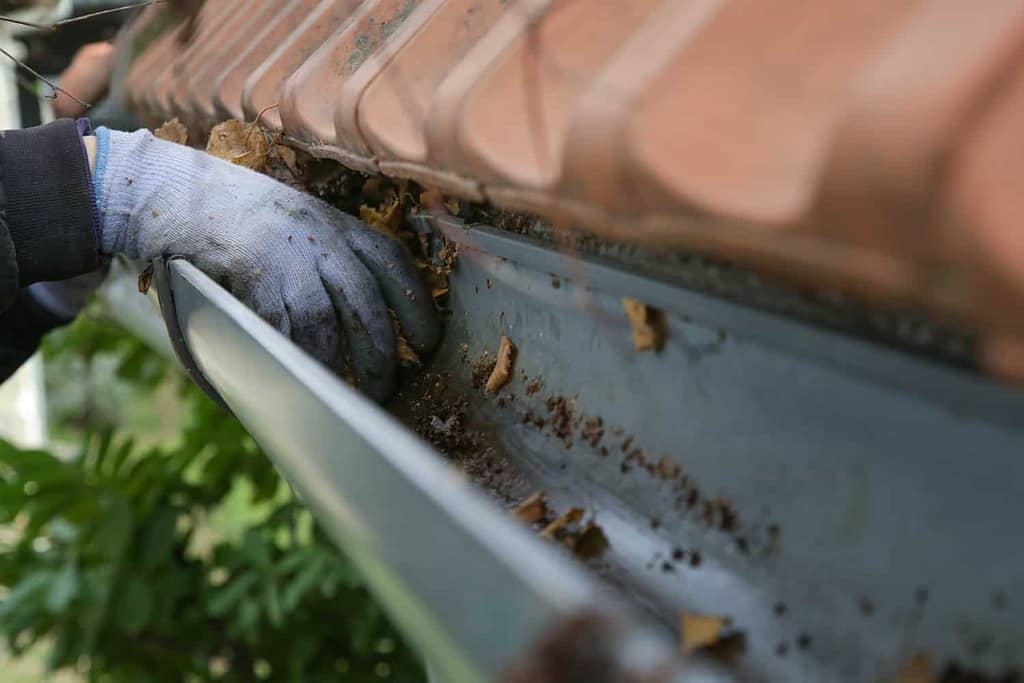
3.) Manufacturing Defects
It costs a lot to replace your roof or install a new asphalt shingle roof, especially if you opt for a higher-end roofing material. While homeowners hope for roofing projects to go smoothly, sometimes that isn’t the case. You may come across damaged shingles that are only failing due to manufacturing defects.
Beware of Blistering Roof Shingles
Blistering is probably the most common indicator of a defective shingle product, and it can be a big reason you’re experiencing shingle granule loss on an asphalt roof. Like it sounds, this kind of shingle damage presents itself as pimple-like protrusions along the asphalt shingle. Blistering often means that your asphalt shingles lack the proper protective layer to avoid costly leaks and shingle wear.
While many roofing manufacturers claim this is just a cosmetic issue, blistering could be why your asphalt roof is losing granules. Give your local contractor a call to assess your roof shingles and ensure your roof warranty covers a roof replacement if required.
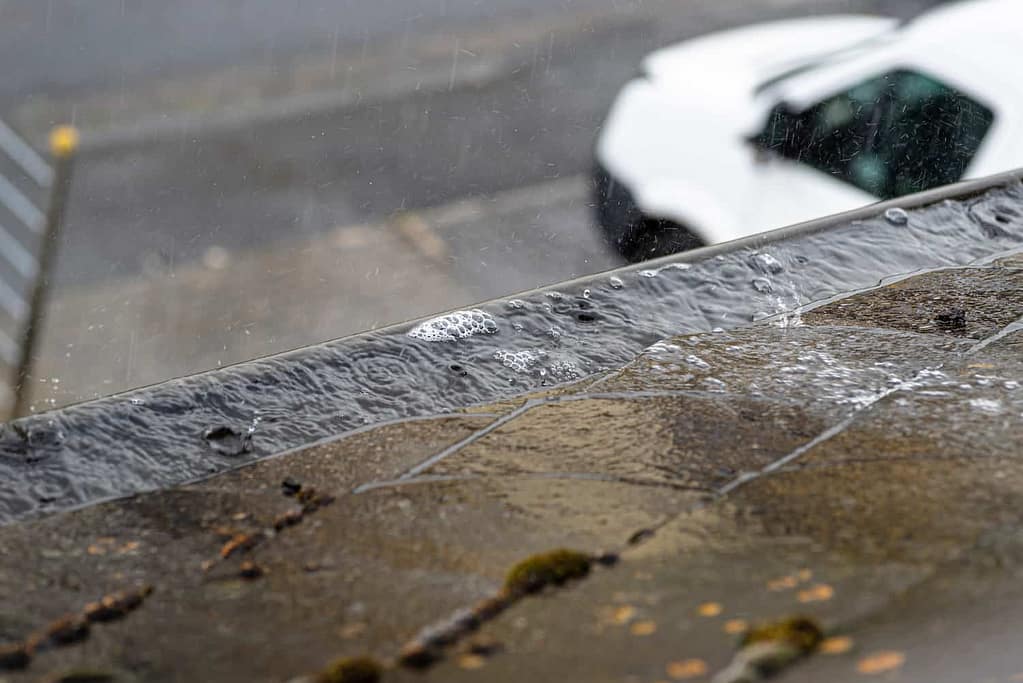
4.) Storm Damage
You might notice more granules in your gutter system after particularly nasty weather. Many weathering events can dislodge granules, including:
- Rain
- Wind
- Snow
- Ice
- Hail
- Sun exposure
If you suffer granular loss from hail damage or storm damage, it’s crucial to keep an eye on the issue and call a roofing professional for a free inspection. Hail damage or even physical damage from falling tree limbs during rain or high winds can cause serious issues with the protective coating of asphalt shingles, leading to even more granular loss on your roof.
Climate Concerns
If you live in a cold or rainy climate where hail damage or other roofing issues like ice dams are common, this can also be a reason you’re seeing more mineral granules than normal. You’ll want to discuss any climate concerns with your insurance company to ensure your roof is covered in case of any damage from local weather conditions.
5.) Roof Slope
The slope of your roof pitches can also damage shingles since rain and melting ice or snow move with more velocity over the surface of an asphalt shingle roof. The fast-moving precipitation can rapidly speed up granule loss on a highly sloped roof, leaving you with damaged shingles much quicker than expected.
6.) Physical Wear From Foot Traffic
Foot traffic from your roofing contractor during repairs can also loosen granules. You might find worn-down shingle granules in some areas of an asphalt roof where repairs are usually made, including:
- Roof pitches
- Valleys
- Ridges
- Skylights
- Flashing and chimney flashing
- Dormers
- Hips and hipped edges
- Roof surface
Look for loose shingles and roofing granules around these locations to ensure foot traffic during your project didn’t cause any further problems.
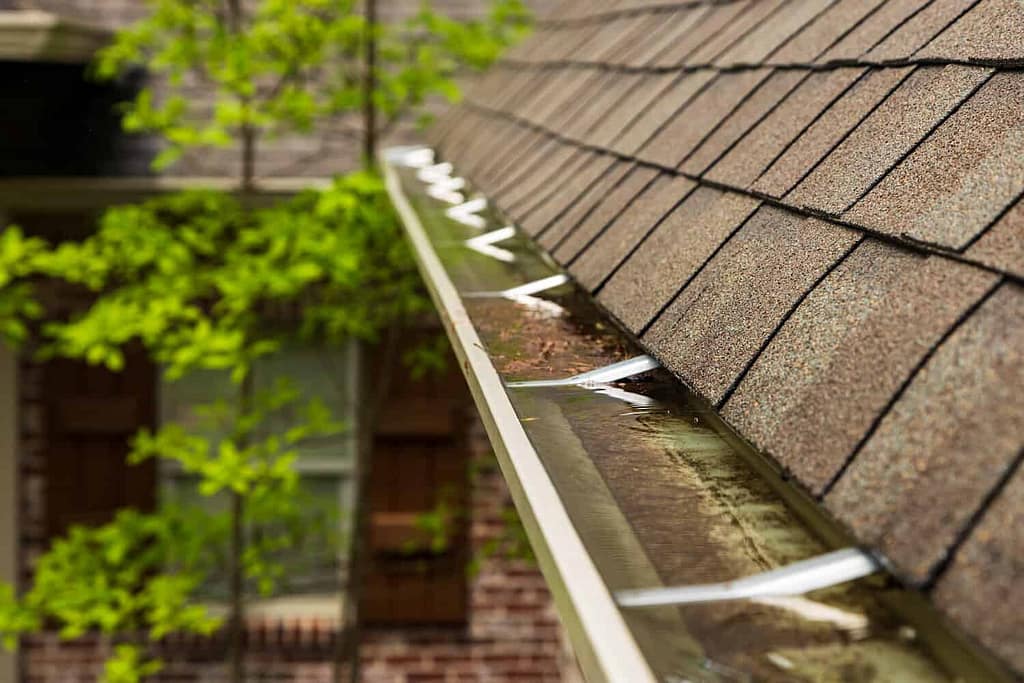
7.) Aging Asphalt Shingles
If your home has an older roof, you’ll likely suffer granule loss. Between storm damage, long-term exposure, and time passing, an aging roof has been through a lot. When the protective coating on an asphalt shingle wears down as your roof ages, roof granule loss becomes inevitable.
Losing granules is all a part of the process as your asphalt shingle roof ages. If your old roof starts to shed granules excessively, it’s time to get in touch with a trusted roofing professional to take on a roof replacement.
Leave Loose Granules Behind
Although it’s natural to find some roofing granules in your gutters or along sidewalks after rainwater drains, you don’t want to let excessive granule loss get out of hand at your house. Work with a local contractor or roofing company to get your granule loss under control. Contact Best Exteriors today and leave loose shingle granules behind for good.
